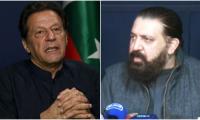ISLAMABAD: Asking the independent power producers (IPPs) time and again to sacrifice will not bring the desired relief in tariff for the consumers unless the power sector reforms are executed efficiently.
This was the gist of a “Great Debate” — Ker Dalo, Pakistan Kay Liye — on the IPPs hosted by senior anchor of Geo News, Shahzad Iqbal. Ker Dalo, Pakistan Kay Liye (Do it for Pakistan) is a massive campaign on the economy launched by The Mir Khalil-ur-Rahman Foundation (MKRF) in tandem with Geo-Jang Group.
The MKRF’s Ker Dalo campaign argues that Pakistan has the resilience needed to overcome its current economic challenges. It encourages the government to take the bold decisions needed to affect the turnaround. Ker Dalo enjoys the support and endorsement of major business associations such the Pakistan Business Council, FPCCI, Pakistan Banking Association, ICAP besides business schools such as the Institute of Business Administration (IBA). A board comprising some of the most renowned leaders of business and industry oversees the campaign.
Ker Dalo has conducted a series of debates to discuss some of the most important economic issues facing Pakistan. In Sunday’s debate,
Federal Minister for Power Awais Ahmad Khan Leghari, Hubco CEO Kamran Kamal, Lucky Electric Power CEO Rohail Muhammad, FPCCI Vice President and former APTMA chairman Asif Inam, former caretaker minister Gohar Ejaz, and Economist Ammar Habib Khan took part in the debate. , stressing the urgency of reforms. They focused on the pressing, critical and controversial issue of the Independent Power Projects (IPPs). Energy and energy prices are central to Pakistan economic growth and development and to making our products competitive in the international market.
The two-hour (7pm to 9pm) debate ended with multi-tier solutions along with the debt-profiling of CPEC power plants and local loans profiling of government-owned power houses.
The desired reforms include reduction in power theft, improvement in recovery of electricity bills, making NTDC efficient enough to carry the cheaper energy generated in the southern part of the country to the load center of Punjab, privatization of DISCOs, and more importantly, the introduction of private power markets.
Leghari said the government was taking stock of the power sector comprising three components —generation, distribution and transmission.
He acknowledged that the power generation cost was inflated due to which the country was not advancing anymore.
He said the distribution sector was rife with inefficiencies including losses and theft of Rs500-600 billion a year.
He also admitted that the power transmission was not up to the mark and was facing serious constraints.
He, however, mentioned that the termination of five IPPs contracts would bring a relief of Re0.65 per unit.
The energy minister disclosed that the system did not need power from these five IPPs, as the NTDC had refused to use their power.
He also disclosed that the government was working on a 5-year policy on demand management.
“If we look at the power generation landscape, the generation cost is Rs35 per unit, including the capacity payment of Rs18.39 per unit which is more than 50 percent of the generation cost out of which Rs18.39 per unit loans component stands at Rs12-13 per unit.
“If the consumption goes down, the capacity payment will increase. A reduction of Rs100 billion in the capacity payments is tantamount to Re1 per unit relief provided 100 billion units are consumed.”
The minister said the debt profiling of CPEC projects would bring Rs3.5-3.75 per unit relief. The government has hired a consultant for profiling of the Chinese loans used in the CPEC power plants.
The Bank of China, an insurance company and lenders have also been contacted for the purpose. The government is quite serious about implementing the required reforms in the power sector and is also looking at the taxes on the electricity bill, causing an increase in the bills. The government is also working on how to rationalise the taxes.
Leghari said the government would not force the IPPs to terminate their contracts, but was asking them to voluntarily scrap their power purchase agreements for country’s sake, as they had already pocketed huge profits.
The energy minister said the government had adopted a multi-pronged strategy and was looking at every aspect to reduce the power tariff.
The government aims to reduce the losses which will bring Rs2-2.5 per unit relief in the tariff. The government is upbeat about privatization of the power distribution companies (Discos) and is also working to revamp the NTDC to improve its output.
Leghari said the energy ministry had also done substantial work on the private power markets —CTBCM. However, he made a point that when the PTI government fixed the value of dollar at Rs148 in 2020, it played a foul by giving relief to the IPPs that whenever the government initiated a forensic and heat audit —parts of Muhammad Ali Report, it will have to get permission from international arbitrators. This is how the PTI regime tied the hands of the government to look into the criminal wrongdoings of the IPPs, he added.
Dr Gohar Ejaz came down hard on the IPPs, saying they were sucking the nation’s blood and made Rs260 billion in shape of capacity payments and were still getting a handsome amount of Rs100 billion.
He said a wind project of $60 million had been set up at the cost of $120 million. Out of 27 wind power plants, 15 are getting 14 cents per unit tariff while the remaining are charging 4 cents per unit. However, the wind projects that generate power at 4 cents per unit are discouraged.
Ejaz said the IPPs had taken 2000% return and presently they were getting 100 percent return.
Ammar Hammad said capacity payment was not a problem arguing that the country’s economy was import-led and it always faced the current account deficit issue, which was $18 billion in 2021 because of import financing and the value of US dollar surged to Rs320 from Rs170 which is why the capacity payment increased manifold.
In addition, he explained, LIBOR surged from 0.45 to 5 percent and KIBOR also increased.
He said economic indicators also affected the power prices and capacity payment cost. He, however, stressed increasing the energy consumption due to which the capacity payments burned would spread out on the maximum units used.
FPCCI’s VP Asif Inam stated that the country’s biggest problem was capacity payments. He said it is rumoured against facts that the rupee devaluation causing of the problem. He said the agreements are to be renegotiated for future market.
He underlined that prices were going down across the region.
Asif Inam said the consumption of electricity will not increase unless the tariff stood at 6-8 cents per unit.
“Why wind projects have been set up for 30 years capacity payments? Their contracts should have been for 5-7 years keeping in view their costs.”
Hubco CEO Kamran Kamal said his plant was set up in 1994 and the power policy came the same year alluring the international companies to Pakistan.
He said Hubco plant was set up under contracts the then government offered and his company never breached any provision of the contract.
Kamal also offered that the IPPs were ready for forensic audit and criminal proceedings. He argued that criminal proceedings were never initiated, as the IPPs did not play foul.
He recalled that IPPs power purchase agreements were revised in 2020 while fixing the value of the US dollar at Rs148 and this is how the IPPs sacrificed Rs800 billion. But this did not work, as the required reforms the government should have completed were not even initiated.
“For the last 32 years, the governments have not implemented the public power sector reforms.”
For CPEC projects, the government dictated the Nepra to give them an alluring tariff. This is how 10,000MW was added to the system but why projects of 5,000MW were installed on imported RLNG.
He said failure in dispatching cheaper electricity by the NTDC from the south had shifted the burden of Rs300 billion on to the consumers. However, the treatment being meted out to the IPPs would shatter the confidence of investors, he warned.
He said the country’s risk profile was high which is why the foreign lenders wanted their loans repaid in 10 years instead of 30-35 years.
He also flagged the failure of the NTDC in not carrying 4,00OMW from the south, as it could carry a load of 2,000MW at the maximum. However, the consumers have to give the wheeling charges against 4,000MW.
He also responded to Gohar Ejaz saying the IPPs were getting just 15 percent return and not 2000 percent.
Mr. Rohail, CEO of Lucky Power Plant, said Pakistan had a single buyer market which is why capacity payments were charged.
He said the IPPs were ready to face the forensic audit. He said the government held a bidding process for a 60MW public sector solar plant but no bidder turned up because of the high-risk profile. However, against the government project, the KE sought bids of its two solar plants and received eight bids for each.
Riyadh announced on August 15, 2021 that it had withdrawn its diplomats from Afghan capital
South Africa had their target reduced by one run to 308 via Duckworth–Lewis–Stern method
Putin was addressing local leader of Tatarstan region where Kazan is located in road-opening ceremony
India is home to more than 220 million child brides, according to United Nations
Sindh CM underscores appointment of dedicated Ombudsperson to safeguard rights and interests of working women in Sindh
Students under age of 22 with domicile of Punjab will be eligible for Honhar Scholarship







